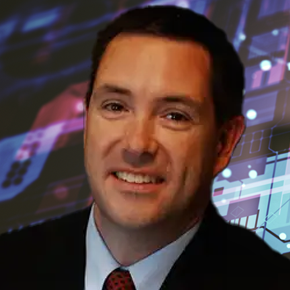March 16, 2023
Neurodivergence in Engineering

Transcript
Can Neurodivergence Drive Innovation in Engineering?
Neurodivergence in engineering is a phenomenon that is more widely accepted than it is discussed. And yet, in order to achieve our goals of powering manufacturing while decreasing carbon footprint, we’re going to need to learn how to think divergently. We’re going to need to perceive new patterns in our data and link those patterns to business results. And to do this at scale. It will demand an entirely new way of thinking that is systematically deployed across an organization, aided with digital technology and effective change management.
How can manufacturing organizations leverage neurodivergence in engineering? To answer that question, I’m bringing in a seasoned manufacturing executive with personal expertise on thinking differently. Peter Mann, is a former Dell executive who bootstrapped Alen Corp, a designer and manufacturer of indoor air purifiers from zero to 14 million. He is now on his second startup, Oransi, which makes electric motor technology and indoor air purification with a mission to achieve clean energy.
Peter Mann credits his autism, which was diagnosed late in life, as giving him a unique edge when it comes to seeing patterns and turning those insights into business success. Peter Mann, welcome to the podcast.
Peter Mann: Excited to be here.
Leah Archibald: I’m excited for both your take on neurodivergence in engineering, and your personal take on what it takes to think differently as a manufacturing CEO. In your opinion, can Neurodivergence play into a strategy of innovation when it comes to product design?
Peter Mann: I think any time you can add diversity to your team, you bring new perspectives in how you look at things. And I think if we’re going to solve some really difficult problems, we need to look at things differently.
Historically, people have not really been represented fairly within organizations. One thing that autistic people specifically have is a different way of thinking, which gets us in trouble. We don’t necessarily pass job interviews to get hired in the first place. But we’re more detail-oriented. We’re more bottoms-up thinkers, versus top-down.
When you’re a bottoms-up thinker, there is no box. There’s no thinking outside the box, because everything is outside the box by default. We’re not necessarily smarter than other people, but we do tend to have hyperfocus. We can really zero in and focus on something, whereas other people will be more multi-taskers. If you’re really working on a project, if you devote all your time and energy to that, you’re just putting in more time than other people are.
Neurodivergence Sees Data Differently
Leah Archibald: Do you see data in a different way than neurotypical people tend to see data?
Peter Mann: When people talk to me about a scenario, I see charts in my head. I can see graphs when someone’s describing a situation, and I’m like, “That’s not going to work.”
Data and math are really all patterns. If I can look at numbers and data, and I can maybe see some patterns that other people don’t see, it really goes back to that element of focus.
Leah Archibald: Do you think there are digital tools that can do the same thing? In other words, can digital transformation help design engineers see the patterns in data and get business insights from them?
Peter Mann: I think so. I think that’s the direction things are going.
Leah Archibald: To learn how digital tools can help you see the hidden patterns in your data, read the latest article: A Powerhouse for Transforming Business.







